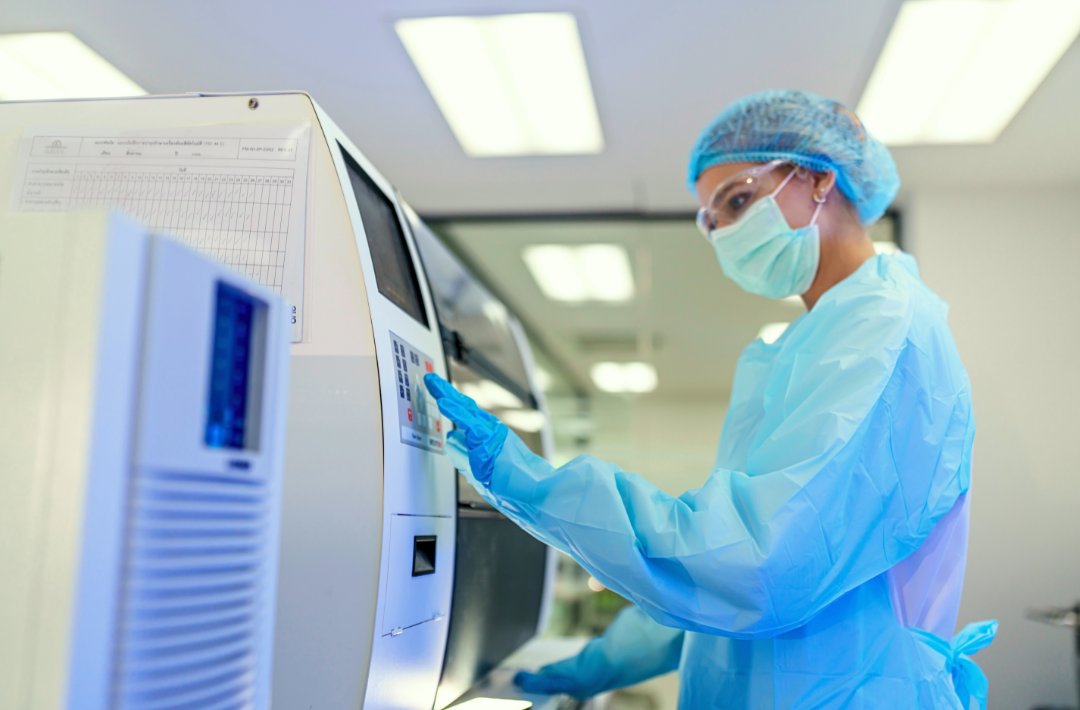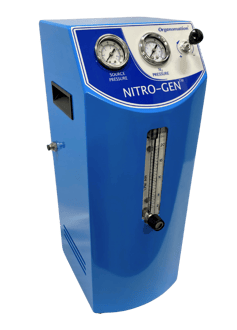
When it comes to acquiring essential laboratory equipment, the traditional model of large upfront capital purchases is giving way to more flexible, financially strategic approaches. Lease-to-own programs are revolutionizing how academic institutions, commercial testing labs, and environmental analysis facilities acquire analytical instrumentation—and for good reason.
At Organomation, we understand that budget constraints shouldn't prevent laboratories from accessing the nitrogen generation, solvent evaporation, and sample preparation equipment they need to deliver exceptional analytical results. That's why we're excited to introduce our new lease-to-own program for the NITRO-GEN nitrogen generator, designed to make on-site nitrogen generation accessible to more laboratories than ever before.
What is Lease-to-Own for Laboratory Equipment?
Lease-to-own programs allow laboratories to acquire equipment through manageable monthly payments while building equity toward ownership. Unlike traditional equipment rentals, a portion of each payment applies toward the purchase price. At the end of the lease term, labs can purchase the equipment for a nominal fee (often just $1) or apply accumulated payments toward full ownership.
These programs combine the cash flow benefits of leasing with the long-term value of ownership—giving laboratories the best of both worlds.
Why Lease-to-Own Makes Sense for Your Laboratory
1. Preserve Critical Capital for Core Operations
Laboratory budgets are under constant pressure. Between staffing costs, consumables, method validation, and regulatory compliance, capital resources are stretched thin. A lease-to-own program eliminates the need for large upfront equipment purchases, preserving cash reserves for the operational expenses that keep your lab running.
For environmental testing laboratories launching new services—whether PFAS analysis, pesticide screening, or EPA method compliance work—this flexibility is invaluable. Rather than depleting capital reserves on a single nitrogen generator purchase, labs can allocate resources to hiring skilled analysts, purchasing reference standards, or investing in marketing efforts to acquire new clients.
Academic research laboratories face similar pressures. Core facilities operating on limited equipment budgets can spread costs over time without waiting months or years for grant funding approvals. This means researchers maintain access to essential sample preparation equipment without lengthy procurement delays that can derail research timelines.
2. Align Equipment Costs with Revenue Generation
Commercial testing laboratories and contract analytical services operate on project-based revenue models. Lease-to-own programs allow equipment costs to align directly with the revenue those instruments generate.
Consider an environmental testing lab expanding into nitrogen-dependent sample preparation for chromatography-mass spectrometry analysis. A NITRO-GEN nitrogen generator enables nitrogen blowdown evaporation for sample concentration—a critical step in environmental contaminant testing, pharmaceutical analysis, and food safety applications. Rather than waiting to accumulate capital for a full purchase, the lab can deploy the generator immediately, begin accepting clients, and use revenue from those analytical services to cover monthly lease payments.
This approach transforms equipment from a capital barrier into a revenue enabler. Labs start generating income from new analytical capabilities on day one, with lease payments structured to match cash flow patterns.
3. Accelerate Laboratory Launch and Service Expansion
Speed to market matters. Whether launching a startup environmental testing lab or expanding an existing facility into new analytical services, timing can determine success or failure.
Lease-to-own programs eliminate the traditional equipment acquisition bottleneck. Environmental labs pursuing EPA certification for emerging contaminant testing don't need to wait for venture capital funding or bank loan approvals. Academic labs adding sample preparation capacity for collaborative research projects can deploy equipment immediately without navigating lengthy institutional purchasing processes.
For nitrogen generation specifically, this acceleration is significant. Converting from nitrogen cylinders to on-site generation with the NITRO-GEN provides immediate operational and cost benefits:
- Uninterrupted nitrogen supply for blowdown evaporation up to 48 sample positions
- Elimination of cylinder rental fees, delivery charges, and supply chain delays
- Enhanced laboratory safety by removing high-pressure gas cylinder handling
- Optimized workspace with wall-mountable, space-saving design
These benefits begin accumulating from day one of deployment—not months later after capital approval processes conclude.
4. Predictable Budgeting and Financial Planning
Laboratory managers and principal investigators appreciate financial predictability. Lease-to-own programs provide fixed monthly payments, enabling clear budget forecasting and eliminating unexpected capital expenditure approvals.
For academic laboratories operating on annual or grant-cycle budgets, this consistency is essential. Monthly lease payments integrate seamlessly into operating budgets, avoiding the budget disruptions caused by unexpected equipment failures or end-of-life replacements.
Commercial laboratories benefit from improved balance sheet management. Because lease payments are often treated as operating expenses rather than capital expenditures, they don't tie up credit lines needed for business expansion or working capital. This preserves financial flexibility while still building toward equipment ownership.
5. Tax and Accounting Advantages
Lease payments are typically deductible as business expenses, reducing the net cost of equipment acquisition. For commercial environmental testing laboratories, this provides immediate tax relief that improves cash flow.
The accounting treatment also keeps leased equipment off the balance sheet (depending on lease structure), improving financial ratios important for securing business credit, attracting investors, or demonstrating financial health to potential clients and partners.
Who Benefits Most from Lease-to-Own Programs?
Academic Research Laboratories and Core Facilities
Universities and research institutions with limited equipment budgets and grant-dependent funding find lease-to-own programs particularly valuable. These programs eliminate lengthy procurement delays, spread costs across budget cycles, and preserve grant funding for consumables, personnel, and research-specific expenses.
Academic core facilities serving multiple research groups can deploy nitrogen generation capacity immediately, charge usage fees to recover lease payments, and build toward ownership without disrupting institutional budgets.
Commercial Environmental Testing Laboratories
Environmental labs providing contract analytical services for regulatory compliance, industrial clients, or environmental consulting firms benefit from aligning equipment costs with project revenue. Lease-to-own programs enable rapid service expansion into emerging contaminant testing, method development, or multi-matrix analysis without capital depletion.
For environmental testing startups, lease-to-own provides critical equipment access during the revenue ramp-up period when cash flow is tightest and investment capital is most valuable for personnel and marketing.
Analytical Services and Contract Testing Labs
Contract laboratories performing pharmaceutical analysis, food safety testing, forensic analysis, or materials characterization leverage lease-to-own programs to maintain technological competitiveness while preserving capital for client acquisition and staff development.
Sample preparation equipment like nitrogen generators directly enables revenue generation, making lease-to-own financing a strategic investment rather than a simple cost.
Consulting Firms and Specialty Testing Services
Environmental consulting firms, forensic laboratories, and specialty testing services with project-based revenue models use lease-to-own to match equipment deployment with contract timelines, ensuring analytical capabilities scale with demand.
The Strategic Advantage of Modern Equipment Financing
The shift toward lease-to-own programs reflects a broader evolution in laboratory management philosophy. Rather than viewing equipment acquisition as a one-time capital expense to be minimized, forward-thinking laboratories recognize analytical instrumentation as a strategic asset that should be deployed quickly, updated regularly, and financed in ways that align with operational realities.
For academic institutions, lease-to-own enables research competitiveness and technological currency without the institutional budgeting constraints that traditionally limited equipment access. Universities can maintain cutting-edge analytical capabilities across multiple cores, respond to emerging research opportunities, and scale infrastructure with changing research priorities—all while preserving grant funding for the scientific work that drives institutional missions.
For commercial laboratories, lease-to-own represents a fundamentally different approach to business growth. Rather than waiting to accumulate capital or navigating bank lending processes, labs can deploy new analytical capabilities immediately to pursue emerging service opportunities. Equipment becomes a tool for revenue generation and market expansion rather than a barrier preventing market entry. This agility translates directly to competitive advantage in dynamic testing markets.
For environmental testing specifically, lease-to-own unlocks rapid deployment of advanced analytical capabilities for emerging contaminants, regulatory compliance methods, and specialized testing services. Whether responding to new PFAS regulations, expanding into pharmaceutical residue analysis, or building multi-matrix testing capacity, environmental labs can scale capabilities on demand without capital constraints.
The financial benefits—preserved cash flow, predictable budgeting, tax efficiency, and accelerated ROI—are compelling. But the strategic advantage runs deeper: laboratories that can deploy new analytical capabilities quickly, update technology regularly, and scale infrastructure with demand will outcompete laboratories constrained by traditional capital acquisition models.
As laboratory budgets face continued pressure and analytical methods evolve rapidly, lease-to-own programs are becoming not just an option for budget-conscious labs, but a strategic advantage for forward-thinking organizations.
The laboratories leading their fields aren't necessarily those with the largest capital budgets—they're the ones that have learned to invest capital strategically, deploy technology rapidly, and focus resources on the science that matters most.
